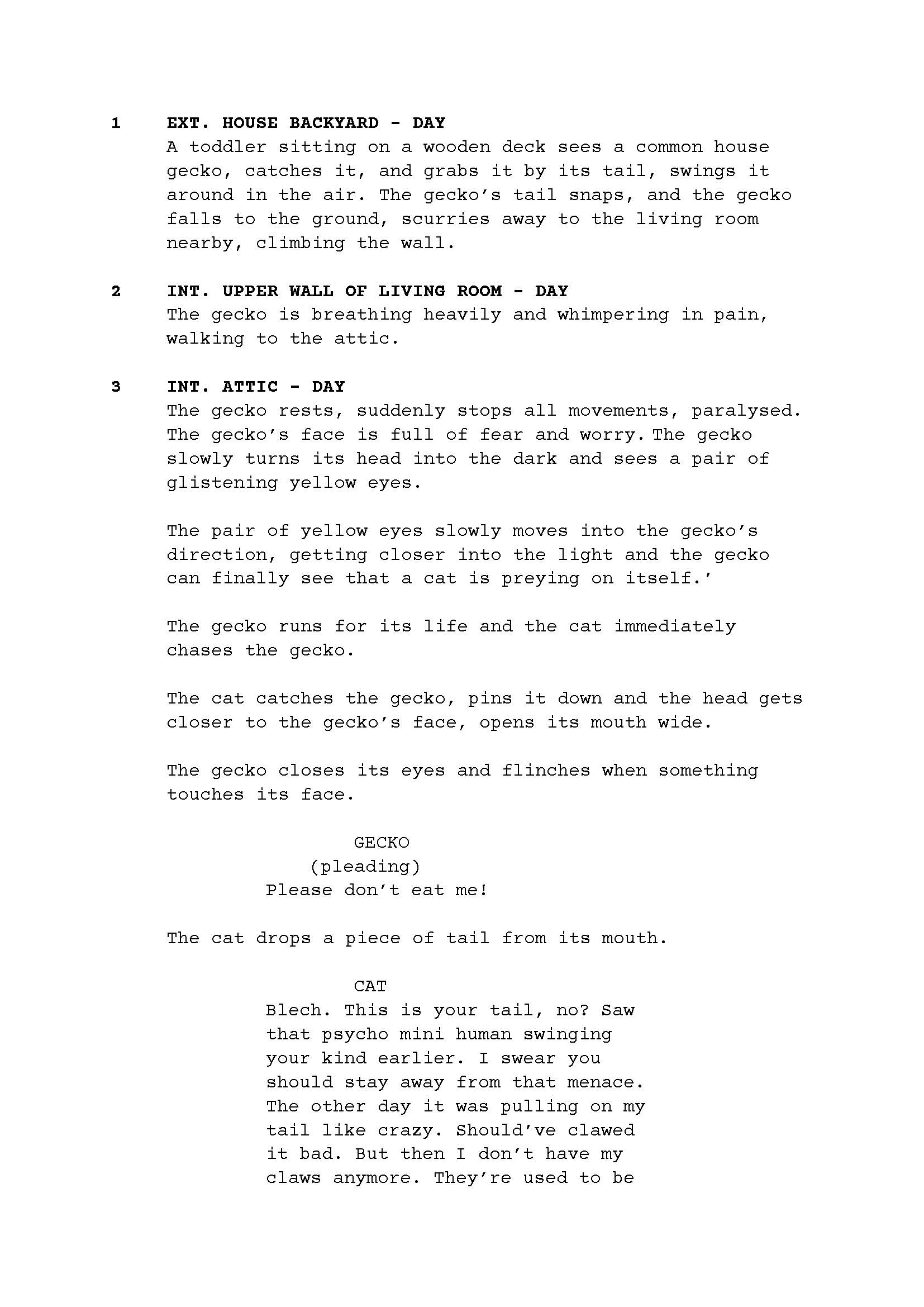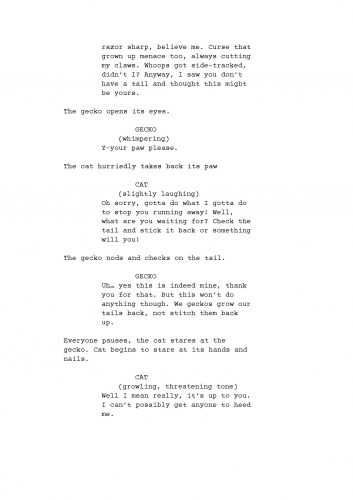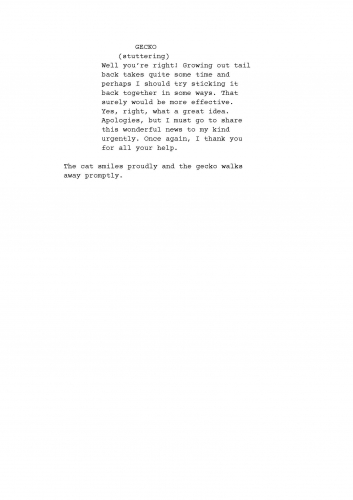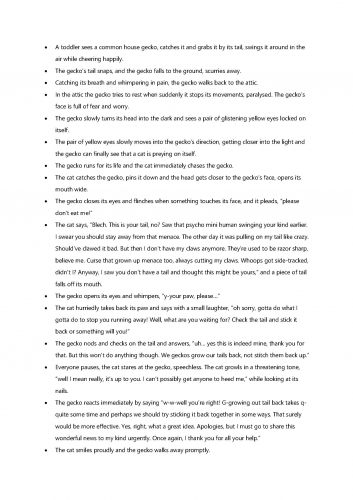
MAIN FILE (attached) : W6_script.
ITERATIONS (attached): W6_beats_bulletpoints and W6_initials
This script explores the idea of dialogue as a device for characters’ external manifestation of the internal state or EMIS. By using this short script, I can show the character of the gecko and the cat through their dialogue. The cat is willing to help and considerate, chatty, but also quite demanding, forceful, proud in an arrogant way and is slightly gullible at the end of the story. The cat is a character who wants its works to be appreciated and does not take no for an answer. Meanwhile, the gecko is somewhat timid, honest, and also resourceful. All these complex characteristics of a character can be externalised and presented through dialogue, as dialogue has the property to communicate character design through speech. Additionally, this work shows how dialogue acts together with action as both complementary and contrary relationship. The complementary relationship is shown when the gecko asks the cat to move its paw with whimpering sound, and that the gecko really is scared. The contrary relationship is shown when the cat said that the gecko can do whatever it wants with the tail, but the action suggests that the cat is threatening the gecko, as if it’s saying that if the gecko does not follow the cat, the cat will harm the gecko. Another example is when the gecko is running away by lying that it needs to tell its kind about the cat’s idea immediately.
This contradictory relationship between dialogue and action is widely seen in the character Vidia in Tinkerbell movies by Walt Disney Animation, especially in the first movie (2008). In the first movie, in more than one case, Vidia verbally provokes Tinkerbell to prove a case while knowing that Tinkerbell supposedly won’t be able to. This is similar to the famous character Scar from Lion King (1994) when he provokes Simba to go to the elephant’s graveyard.
I reflected that dialogue carries plentiful information about characters as it can work together with action to show how a character talks, what kind of language they use which can suggest past information or upbringing of a character, and more. With this in mind, I can construct better characters by tinkering with dialogue and its relationship with other aspects.
About This Work
By Eugenia Cynthiaputri
Email Eugenia Cynthiaputri
Published On: 15/04/2022



